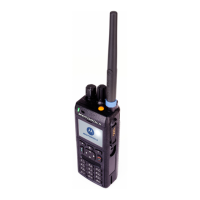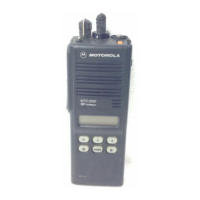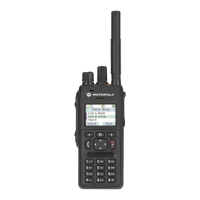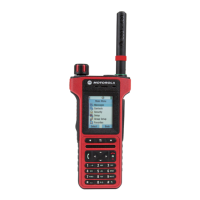B. Digital Architecture
The Motorola microprocessor, in conjunction with
the SLIC, performs the functions of controlling the inter-
nal workings of the radio, as well as interfacing with the
outside world. The microprocessor has 1K of RAM and
512 bytes of EEPROM on the chip. In some versions
the controller board enhances the capabilities of the
microprocessor chip by providing 256K or 512K of
FLASH memory, 32K static RAM, and 8K or 32K of
EEPROM. Other versions use masked programmed
ROM.
The “FLASH” open controller is flexible and capable
of firmware being reprogrammed to support future fea-
tures. The controller, through communication busses,
programs all applicable ICs in the radio (including those
on the transceiver board) for proper operation in the
designated frequency band.
C. Audio Signalling Architecture
The Motorola custom integrated circuit, ASF IC, per-
forms audio signal shaping and filtering. The ASF IC
also encodes and decodes Private-Line (PL), Digital Pri-
vate-Line (DPL), and Motorola Digital Communication
(MDC) signals, as well as decoding trunking signals.
In the transmit mode, the ASF IC amplifies and
shapes the modulating signal on its way to the modulat-
ing port of the FGU. In the receive mode, the ASF IC
amplifies and filters the demodulated signal and applies
it to the audio PA, which drives the internal or external
radio speaker. The ASF IC not only performs pre-
emphasis and de-emphasis, but also performs the
squelch functions and provides the microprocessor with
a clock signal.
9

